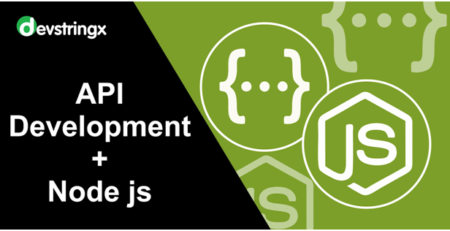HostListener Vs HostBinding | Comparison, Work, Implementation – Devstringx
Angular is a popular front-end development framework that allows developers to create web applications with ease. It is packed with various features and functionalities that simplify web development tasks. Two of these features, HostListener and HostBinding, enable developers to interact with the DOM and handle events in their Angular applications.
Angular is a popular framework for building modern web applications. It provides a variety of features that make it easy for developers to create complex functionality with ease. Two such features are HostListener and HostBinding, which allow developers to interact with the DOM in their Angular applications.
HostListener Vs HostBinding
HostListener is a decorator that use to handle events on the host element of a component. With HostListener, developers can specify which event they want to listen for and what function should be called when that event occurs. This allows developers to create interactive and dynamic user interfaces.
HostBinding, on the other hand, use to bind the properties of the host element to the properties of the component. With HostBinding, developers can easily modify the properties of the host element, such as adding or removing classes, without needing to manipulate the DOM directly.
In this blog post, we will explore HostListener and HostBinding in detail, including how to implement them in an Angular application and why they are important features for Angular development. We will also provide examples of how these features can use to create powerful and dynamic user interfaces. By the end of this post, you will have a solid understanding of HostListener and HostBinding and how to use them in your own Angular applications.
HostListener and HostBinding are featured in Angular which allows developers to interact with the DOM in their applications. HostListener allows developers to handle events on the host element, while HostBinding allows developers to bind a property of the host element to a property of the directive.
These features can use to implement complex functionality in an Angular application with ease. In the following sections, we will discuss HostListener and HostBinding in detail.
What Is HostListener?
HostListener is an Angular decorator that allows developers to handle events on the host element. This means that developers can listen for events such as clicks, mouseovers, and key presses on the host element and trigger a function in response.
How Does HostListener Work?
To use HostListener, a developer needs to first decorate a function with the @HostListener decorator. The decorator takes in two arguments – the event name and an optional array of arguments.
When the specified event occurs on the host element, the function decorated with HostListener is called. The optional array of arguments can be used to pass in additional data to the function.
Good to Read:- Angular 14 with New Updates and Features
Implementing HostListener in Angular
- To implement HostListener in an Angular application, a developer needs to do the following:
- Import the HostListener decorator from the ‘@angular/core’ package.
- Create a function to handle the event.
- Decorate the function with the HostListener decorator, specifying the event name and an optional array of arguments.
What Is HostBinding?
HostBinding is an Angular decorator that allows developers to bind a property of the host element to a property of the directive. This means that developers can bind a property such as the ‘class’ or ‘style’ of the host element to a property of the directive.
How Does HostBinding Work?
To use HostBinding, a developer needs to first decorate a property of the directive with the @HostBinding decorator. The decorator takes in the name of the property to bind.
When the value of the property changes in the directive, the corresponding property of the host element is updated.
Implementing HostBinding In Angular
Implementing HostBinding in Angular is a straightforward process. In this section, we will provide step-by-step instructions on how to use HostBinding in an Angular application.
- Step 1: Import the HostBinding decorator
The first step is to import the HostBinding decorator from the ‘@angular/core’ module. This can be done by adding the code at the top of your component file:
- Step 2: Declare the property to bind
Next, you need to declare the property that you want to bind to the host element. This can be done by adding a property to your component class and decorating it with the @HostBinding decorator.
Declare a property called ‘myClass’ and decorate it with the @HostBinding decorator. You can specify that you want to bind the ‘class’ property of the host element to this property and that the value should be ‘true’. This means that the ‘my-class’ class will add to the host element.
- Step 3: Use the bound property
Now that you have bound the property to the host element, you can use it in our template.
Use the ‘myClass’ property in the [ngClass] directive to conditionally add the ‘my-class’ class to the div element based on the value of the property.
By following these three simple steps, you can easily implement HostBinding in your Angular application and modify the properties of the host element with ease.
Good to Read:- Difference Between Angular Vs AngularJS
Comparison between HostListener and HostBinding
HostListener and HostBinding are both used to interact with the DOM in an Angular application. However, they use for different purposes.
HostListener uses to handle events on the host element while HostBinding uses to bind properties of the host element to properties of the directive.
In general, HostListener uses when a developer needs to handle events on the host element, such as clicks or mouseovers. HostBinding uses when a developer needs to modify the properties of the host element, such as adding or removing classes.
Conclusion
HostListener and HostBinding are powerful features in Angular that allow developers to interact with the DOM in their applications. They can be used to handle events and modify the properties of the host element with ease.
By understanding how these features work and how to implement them in an Angular application, developers can create complex functionality with ease.
Good to Read:- How to Add Breadcrumbs in Angular Application?
FAQs
- What is the difference between HostListener and HostBinding?
HostListener uses to handle events on the host element, while HostBinding uses to bind properties of the host element to properties of the directive.
- How do I implement HostListener in an Angular application?
To implement HostListener, a developer needs to decorate a function with the @HostListener decorator. Specifying the event name and an optional array of arguments.
- How do I implement HostBinding in an Angular application?
To implement HostBinding, a developer needs to decorate a property of the directive with the @HostBinding decorator. Specifying the name of the property to bind.
- What can HostBinding use for?
HostBinding can use to modify properties of the host element, such as adding or removing classes.
- Why are HostListener and HostBinding important in Angular development?
HostListener and HostBinding allow developers to interact with the DOM in their Angular applications, enabling the creation of complex functionality with ease.
Don’t wait any longer! Take action now and hire an Angular developer who can help you stay ahead of the competition and bring your web applications to the next level.














